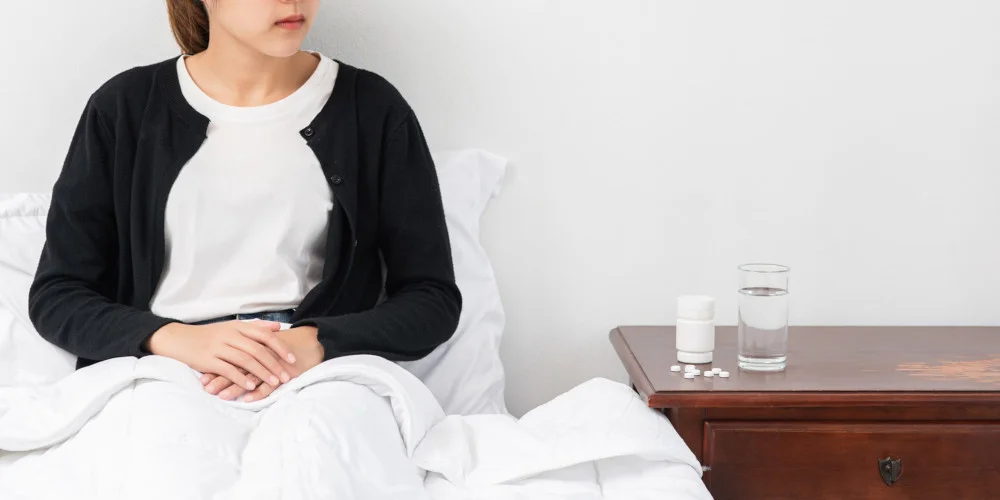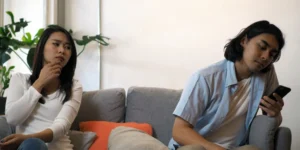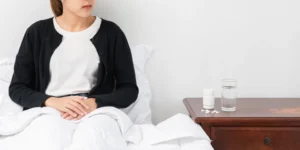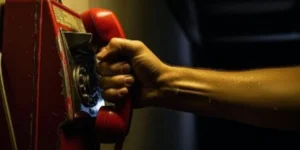The Pill Problem in South African Homes

Walk into almost any South African home and open the bathroom cabinet, and you’ll find it, a small pharmacy hiding behind the mirror. Painkillers for headaches, antibiotics left over “just in case,” sleeping tablets, anti-anxiety meds, antidepressants, cough syrup that could sedate a horse. It’s not unusual anymore, it’s normal. We are a medicated nation. Every feeling, ache, and inconvenience has a pill. We swallow, pop, dissolve, or chew our way through discomfort, not because we’re reckless, but because we’ve been taught to outsource our wellbeing to chemistry.
But this convenience has a dark side. What started as a culture of care has quietly turned into a culture of dependency. Families across South Africa are hooked, not on illegal drugs, but on legal ones.
The Normalisation of Chemical Coping
We don’t think of medication as dangerous. It’s prescribed by doctors, sold in pharmacies, packaged in childproof containers. It looks safe. But in homes across the country, ordinary people are slipping into patterns of misuse that look nothing like what we imagine addiction to be. It starts innocently. A painkiller for a sore back after work. A sleeping tablet for a stressful week. An antidepressant that numbs more than it heals. The line between use and abuse doesn’t appear overnight, it fades quietly, over months or years.
The problem isn’t just physical dependence. It’s emotional outsourcing. We’ve built a culture where pills manage our feelings, sadness, stress, anxiety, fatigue. We no longer ask why we feel bad, only what will make it stop.
The Pharmacy at Home
In South Africa, many households keep an arsenal of medication on hand, a mix of prescriptions, hand-me-downs, and pharmacy purchases. Painkillers, sleeping aids, antihistamines, anti-anxiety meds, antibiotics, all stored together, often shared between family members. It’s common to hear, “Just take one of mine, it worked for me.” A husband gives his wife a sleeping tablet. A mother shares her antidepressant. A teenager sneaks a painkiller from the kitchen drawer. Nobody thinks of it as drug use, it’s just family helping family.
But this casual sharing is one of the biggest hidden drivers of medication misuse. The body doesn’t care about good intentions. Every chemical interaction changes something, tolerance, dependency, or worse, overdose.
The Codeine Crisis
Codeine, found in common cough syrups and painkillers like Myprodol, Adco-Dol, and Syndol, is one of the most abused substances in the country. It’s cheap, accessible, and legal. For many, it starts as a quick fix for pain or stress. But codeine is an opioid, a cousin of morphine and heroin. It builds tolerance quickly. That means what once worked for a headache eventually requires two, then four, then eight pills a day just to feel normal.
South Africa’s informal markets are flooded with codeine-based cough syrups, often sold without prescriptions. These are used recreationally by teenagers and young adults in a drink mix known as “lean” or “purple drank”, a mix of codeine syrup and soft drinks. It sounds harmless, even trendy, but it’s deadly. The body shuts down under the sedative effects, and overdoses are common. The tragedy is that the addiction rarely starts on the street, it starts in the medicine cabinet.
The Sleeping Pill Generation
We are a sleep-deprived society. Between stress, screens, and late-night scrolling, insomnia has become a national epidemic. Sleeping pills, especially benzodiazepines and Z-drugs, have become the silent fix. At first, they work beautifully. A full night’s rest, finally. But within weeks, the brain adapts. Natural sleep hormones drop, and soon, the body can’t rest without chemical help. Stopping suddenly causes rebound insomnia, worse than before, and anxiety so intense it feels like withdrawal.
It’s a cycle that traps countless people. You can’t sleep without the pill, and you can’t function without sleep. It’s a quiet kind of imprisonment, polite, prescribed, and devastating.
The Pandemic Effect
COVID-19 didn’t just make people sick, it made them scared. Anxiety soared. Depression deepened. Access to therapy shrank. So doctors did what they could: they prescribed. Antidepressants, tranquilisers, sleeping aids. Prescriptions skyrocketed during the pandemic and never came back down. Now, years later, millions are still taking the same pills they were given in crisis. Many don’t even remember why they started.
The result? A nation sedated into survival. People aren’t necessarily “using” drugs to get high, they’re using them to get by. But long-term dependence on psychiatric medication without therapeutic support creates a fragile kind of balance. The moment the pills stop, the symptoms roar back, often worse than before.
The Middle-Class Addiction Nobody Talks About
We tend to picture addiction as a poor man’s problem, something that happens in dark alleys and broken homes. But some of the worst dependencies exist behind electric fences and high walls. Middle-class and affluent families are often over-medicated because they have easy access to doctors and private healthcare. A GP visit leads to a prescription, which leads to another. The patient feels better, so the doctor keeps writing the script. It’s a feedback loop that rewards compliance, not recovery.
Meanwhile, children grow up watching their parents cope chemically. Mom takes a pill to sleep, Dad takes one to de-stress, Grandma takes one for pain, and so on. They inherit not just the medication, but the mindset.
The Teenage Trap
Teenagers are growing up surrounded by pills and painkillers that look harmless. They’ve seen their parents use them, and they’ve seen influencers talk about them online. It doesn’t feel like “drugs.” This false sense of safety is dangerous. A teen taking an Adco-Dol for period pain might chase that relief again when life gets hard. A student prescribed Ritalin for concentration might share it with friends who want to stay awake and study. Slowly, prescription drugs become part of youth culture, not rebellion, just normal life.
By the time addiction shows up, it’s invisible. There’s no street dealer, no obvious crash. Just another kid who can’t sleep, can’t focus, and doesn’t understand why they feel empty without a pill.
The Healthcare Blind Spot
South Africa’s healthcare system, public and private, is not designed to deal with prescription dependency. In the public sector, overworked doctors have minutes to diagnose. In the private sector, overprescribing is often seen as customer service. Therapy, lifestyle change, and mental health education take time. Pills are faster. They’re easier to track, easier to bill, and easier to justify. The result is a system that rewards numbing over healing.
This isn’t about villainising doctors, most are doing their best. But the system is structured to manage symptoms, not causes. Patients don’t get time to talk about stress, trauma, or grief. They get medication instead.
When Help Turns Into Harm
Medication saves lives. Antidepressants, painkillers, and anti-anxiety drugs can be essential for recovery when used properly. But every chemical that helps has the potential to harm when misused, misunderstood, or mixed. Polypharmacy, the use of multiple medications, is a growing crisis. People are combining antidepressants, painkillers, and sleeping tablets without understanding how they interact. The side effects mimic mental illness, dizziness, confusion, mood swings, leading doctors to prescribe even more. It’s a spiral disguised as treatment.
The scariest part? Many people don’t know they’re dependent until they try to stop. Withdrawal can mimic illness, convincing them they still need the drug. They’re trapped in a loop that looks like medical management but feels like quiet chaos.
The Family Fallout
Medication addiction doesn’t just affect one person, it reshapes family dynamics. Loved ones walk on eggshells, unsure when to intervene. Parents hide pills from children. Spouses lie to protect one another. Conversations become rehearsed. And because these drugs are legal, denial comes easy. “It’s prescribed,” people say. “It’s not like I’m using street drugs.” But legality doesn’t equal safety. Some of the most destructive addictions hide behind pharmacy receipts.
Children who grow up in medicated households learn that emotions are meant to be suppressed, not expressed. They inherit the same coping mechanisms, the same chemical solutions. Addiction, in that way, becomes generational, passed down like family recipes.
The Role of Rehab in Prescription Recovery
Rehab isn’t just for heroin or alcohol anymore. Many of South Africa’s treatment centres now specialise in prescription drug dependency, particularly benzodiazepines, opioids, and sleeping tablets. Recovery requires a different kind of process. These drugs alter brain chemistry so deeply that detox must be carefully managed under medical supervision. Stopping cold turkey can be deadly.
But beyond detox, recovery means re-learning how to live without pharmaceutical scaffolding. It’s about rediscovering emotion, rest, and pain without medication as the interpreter. It’s about reintroducing reality, raw, uncomfortable, and necessary.
Reclaiming the Right to Feel
We’ve built a culture that pathologises emotion. Sadness becomes depression, stress becomes anxiety, and discomfort becomes disorder. Sometimes those diagnoses are real and life-saving. But sometimes they’re simply human experiences mislabeled as medical ones. The antidote to medication madness isn’t shame or abstinence, it’s awareness. It’s learning to distinguish between healing and numbing. Between treatment and avoidance. Between necessary help and quiet dependence.
We need to rebuild trust in our bodies, our emotions, and our ability to cope without a pill for every problem.
A Future Without a Pharmacy in Every Home
South Africa doesn’t need more medication, it needs more understanding. More honesty. More spaces to talk about pain before it turns into prescription. We need to stop treating every ache, panic, or sleepless night as an emergency that requires intervention. Some pain is part of life. Some anxiety is a sign of humanity. Some sadness is just sadness.
Medication should be a bridge, not a destination. The goal isn’t to eliminate every discomfort, but to learn to live with ourselves again, unfiltered, unmedicated, and awake. Because real healing doesn’t happen in a capsule. It happens in conversation, connection, and courage.





